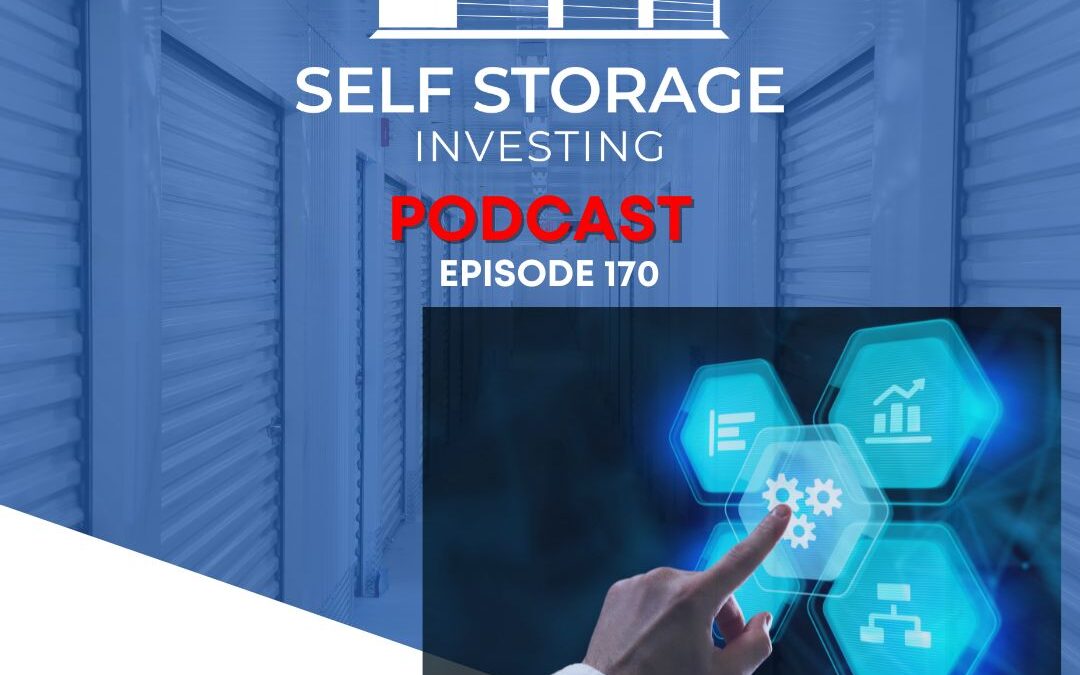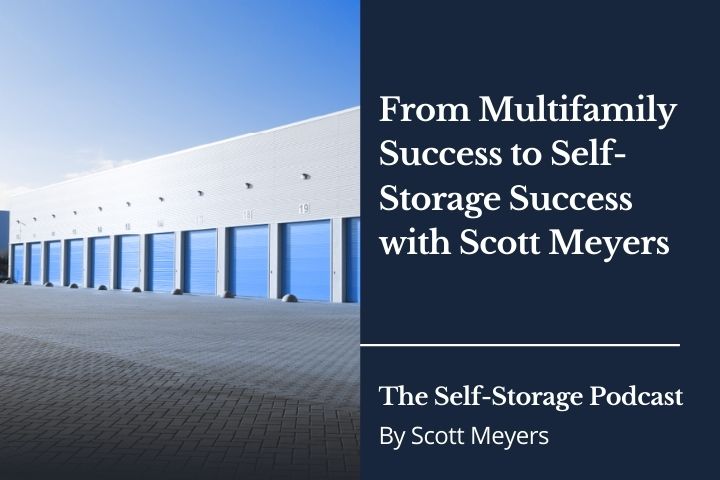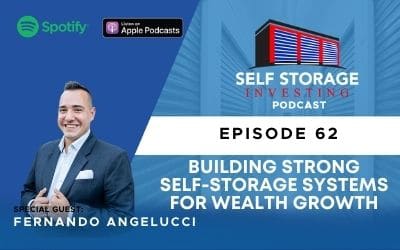The revisions to the SBA rules make it easier for borrowers to meet the 10% equity requirement for loans, allowing seller debt to count towards the full 10% equity injection.
Other changes include the acceptance of Home Equity Line of Credit (HELOC) or cash-out refinance of real property as equity, and the simplification of debt refinance.
And a newly implemented rule limits loan terms for partner buyouts to 10 years.
WHAT TO LISTEN FOR
5:18 Use of HELOC and Cash-out Refinance for Equity
6:30 Clarification of SBA 7(a) vs. 504 Loans
17:40 SBA’s New 10-year Loan Term Limit
26:21 REITs Management Approval
Leave a positive rating for this podcast with one click
CONNECT WITH GUEST ANNE MINO
Website | LinkedIn | Email
CONNECT WITH US
Website | You Tube | Facebook | X | LinkedIn | Instagram
Software solutions are helping manage all aspects of maintaining facilities, from tracking tasks and schedules to providing insights on operational improvements.
In this episode, Jadob Pandl and Bob Linneman of NodaFi join Scott to highlight the importance of having a centralized system for facility operations, especially for new entrants in the industry.
They also discuss the potential for technology to create an ecosystem where different applications can communicate with each other, leading to more efficient operations.
Storage facility owners need to embrace technology to enhance their operations and improve their return on investment.
WHAT TO LISTEN FOR
2:09 Enhancing Operational Efficiency
3:08 Data-Driven Decision-Making
14:18 Remote Management Capabilities
25:33 Technology Integration and Ecosystem Development
Leave a rating for this podcast with one click
GUEST: JACOB PANDL, NodaFi
Website | X | LinkedIn
GUEST BOB LINNEMAN, NodaFi
Website
CONNECT WITH US
Website | You Tube | Facebook | X | LinkedIn | Instagram
Episode Transcript
Bob Linneman (00:00):
This didn’t take three hours to do this, took 15 minutes and there’s cost right there, right off the jump.
Announcer (00:15):
This is the Self Storage Podcast where we share the knowledge and skills from the industry’s leading investors, developers, and operators to help you launch and grow your self storage business. Your host, Scott Meyers, over the past 18 years has acquired, developed, converted and syndicated nearly 5 million square feet of self storage nationwide with the help of his incredible team at selfstorageinvesting.com, who has helped thousands of people achieve greatness in self storage.
Scott Meyers (00:50):
Hello everyone, and welcome back to the self storage Podcast. I’m your host, Scott Meyers, and on this week’s episode we have Bob and Jacob from NodaFi. Now these two fine gentlemen, and I mean fine gentlemen, because they were so kind as to give my wife and I a lift from the airport in a brand new cyber truck in Las Vegas for the Inside Self Storage World Expo. And we got to chatting, I mean, first of all, master marketers, what a great way to introduce their new offering to the self storage marketplace. But we had an opportunity then of course by design to then they had us captive to talk about their offering and what they’re doing in the space. So these guys have an incredible story, an incredible product that they’re introducing to the self storage industry. And so I wanted to have him on. So I’m Jacob, welcome to the show.
Jacob Pandl (01:38):
Yep. Thanks for having us, Scott, and appreciate you letting us keep you captive in the cyber truck for 15 minutes. And
Scott Meyers (01:45):
Well, the pleasures all mine. So Jacob, Bob, whoever wants to take this, before we dive into the details of your offering, let’s pretend that we just have a five minute ride back from the airport over to Caesar four where the show is, and give us an overview for Storage Nation as to what NodaFi does for the industry and how you work with cell storage facility operators to improve their operations on the backend.
Jacob Pandl (02:09):
So where we kind of fit into the overall operation and help out is essentially where your property management system like a storable or something leaves off with managing your rentals and your unit information, tenant stuff, all of that we kind of pick up where that all leaves off really on the boots on the ground operations side. So you have a single site or a portfolio of sites, you’ve got gates and locks and units, and maybe you even have elevator systems if you have facilities inside and all of this equipment assets, all these things that are incredibly important to having a highly functioning site or facility that all needs to be maintained. And maybe right now you’re doing it if some of our clients, how they were doing it before, it’s a spreadsheet or text messages, phone calls, maybe you have a call center responding to some of those issues.
(03:08):
We come in and help you basically take all of those various aspects that go into the physical maintenance and facility operations that you need to track that you’re assigning to your boots on the grounds like maintenance technicians and provide a single place for you to track those tasks that work schedule, preventative maintenance. And then also from that, once you have all that kind of operation built up in NodaFi and people, you’re starting to collect that information and data, we can highlight areas where you can improve your operation. Maybe that’s like something like, hey, this gate has broken down five times over the last year. If you have 20 properties, you might not recognize that that gate is a recurring failure. You might just keep dumping money into it. So we can tell you, Hey, this gate has broken five times, you spent $7,000 on it, maybe you should get it replaced versus continuing to put more money into it. So once you have this foundation of a facility operation built out within our system, then we’ll help you provide insight into how you can improve the operation as well.
Scott Meyers (04:26):
Let’s talk about, well, how about we continue the conversation for Storage Nation here to talk a little bit more about, first of all, I would say maybe a different way that most people get into the storage business are different than most how you two landed in the self-storage business with your offering. Give a little bit background on yourselves and then yeah, let’s dive into what you have for us here today.
Jacob Pandl (04:49):
Sure, yeah, so I can kind of give an overview of just sort of my background and then where kind of the inception of NodaFi came from and then really how that led us into the storage business overall. So just I guess taking it way back, so I grew up in Milwaukee, Wisconsin, along with Bob and I actually grew up in the restaurant industry. So my parents still to this day run as small German, Wisconsin kind of supper club in Milwaukee and kind of growing up in that industry. And I was also kind of a nerd, just sort of obsessed over technology and all the technological change happening in the early two thousands. But what I saw was all these industries being transformed by technology, all these internet businesses coming online and some incredible innovations happening. But for my own day-to-day life and for my parents’ day to day and everybody I worked with and where we spent most of our time, there really wasn’t much changing.
(05:59):
There wasn’t a lot of that innovation trickling over to the real world here. So my interest is kind of always in finding this overlap of one, providing value, creating things where we spend most of our time, which is kind of in the workplace trying to create efficiencies and create value in that space. And then also in the space of industries where I felt like technology was overlooking something. So whether that’s the restaurant industry there or now where we’ve kind of found ourselves in the facility space, it’s sort of the same story. So I think that sweet spot, I’ve always kind of had an eye out for those types of problems and building solutions in that space. That’s what I’m passionate about, where I guess taking that and fast forward to actually back at UW Madison where myself and my co-founder Dan went to school, how we got into the facilities world.
(07:03):
We basically were at the time trying to solve a relatively simple problem, which is we were noticing issues popping up around campus, whether that’s like a shower head not working right in the dorm room or a piece of gym equipment being broken or a clogged toilet, whatever it might be. And at the time we were thinking, hey, we all have phones in our pockets now. There are problems we’re seeing, there should be a really easy way to connect this problem with somebody who actually wants to take care of it, wants to know about it, and maybe we can cut some time out of how often these types of issues are being experienced. So we came up with the idea of mapping out the campus facilities and generating unique QR codes for different spaces or a piece of equipment, whatever it might be, tagging those with unique QR codes.
(07:57):
So if you had that same problem, 20th floor dorm room, shower’s not working, you just pull out your phone, you scan the QR code, it knows where you are and then the types of issues you might be having. And then you can press a button and it will route it to Bob who’s over on the facilities team who wants to know about that and we’ll take care of it. So that was the initial purview into facilities operations. And I can kind of talk about how we came from there to where we are here today in self storage, but maybe I’ll let Bob introduce himself first here.
Bob Linneman (08:38):
Sure, yeah, thanks for having us, Scott. So like I said, I’m also from Milwaukee, similar background restaurant family as a bar. So very used to the day-to-day cleaning, kind of grittiness of the stuff that no one really wants to do. That is part of what makes, keep the lights on, what brings people back in and has a good experience. So facilities a part of that. Yeah,
Scott Meyers (09:15):
Well we chatted about how you took that experience and parlay that into working with YMCAs and that’s really where the parallels in your mind were very similar not only to other industries, but from a maintenance standpoint and just a standard operating procedures that you saw in the self storage industry as well. Let’s just talk about those parallels and then what led you to self storage from the YMCA?
Jacob Pandl (09:49):
Yeah, so kind of fast forwarding after solving that kind of problem around connecting these issues in real time in the facilities to the people who would take care of ’em with the QR codes, what we kind of did from there, after establishing a foothold and solving that problem, we just started having probably thousands of conversations between myself and two co-founders and Bob with folks in facilities, whether their facility directors, maintenance technicians, custodial teams, anyone we could talk to about the way they run their facilities and the types of problems and that they’re experiencing in their day to day. And what we discovered is that while this issue reporting flu, it is a good problem to solve. It is actually creating some value here. The much larger problem is that even in now, like 2018, but you fast forward to 2024 and we have a few million people working to basically keep the lights on, maintain and keep things really functioning well with regards to our physical infrastructure and facilities.
(11:00):
And all these people are basically using spreadsheets, paper, maybe some legacy systems to do that. So we thought we could do a lot better. We think we could that people responsible for such a kind of critical role in our society should have beautiful, intuitive, well-functioning software that helps them do their jobs better. And so that’s really where we took this initial seed of an idea and created NodaFi and turned it into really a software solution for helping manage all of the aspects that go into maintaining beautiful facilities and helping them function well. So to your point, Scott working with, we started in the YMCA, so fitness centers, manufacturing companies like Staples, even sports stadiums, the Grizzlies and all of these, they’re kind of different industries, but at the end of the day there’s this kind of core essence of there are facilities that need to be maintained and right now there isn’t a good way for those teams to do that or an easy way for them to track all of the preventative maintenance work, all of their assets, all the escalating issues, those kinds of things was being done very manually.
(12:22):
So we kind of took those industries and introduced our platform there and helped the maintenance teams in those areas really improve their operations. So that was kind of where we got started. And then a couple years ago, I think roughly is when we were introduced to the self storage industry and that was via one of our customers who’s still an awesome customer today called Otter Self Storage. And they came to us, they were really trying to really pushing, I’d say the boundaries and pushing on the bleeding edge of what could be done through remotely managed facility operations. So they have 30 or 40 properties and sites and they had a bunch of a confluence of in-house systems that they had built as well as using spreadsheets, a call center, emails, all this stuff for tracking, responding to issue escalations and tracking day-to-day maintenance operations at all their sites.
(13:26):
But they were running up against the challenges that come with not having kind of a unified approach to that. So there are things like work that is supposed to be getting done on a regular basis might not be getting done. There’s not really a good level of accountability if you’re doing that on pen and paper. If you’re a central operator with 40 facilities and you want to make sure all of them are maintained to your standard, it’s really hard to do that using paper or even spreadsheets, escalating issues on site if a gate breaks or there’s an issue with the door, that kind of stuff. How does that get escalated? So they’d have a call center, but then what happens after that? How does it go to the boots on the ground and how do you make sure that piece gets actually done? So that’s where they came to us and we started working with them.
(14:18):
We said, we’ve done this for sports stadiums, YMCAs, manufacturing plants helped solve these types of problems in those spaces. There’s a unique layer to self storage that is relevant and you can’t just copy paste over here, but we have a foundation of this facility operations system that we’ve built out that we thought could be helpful and they thought could be helpful to them. So we worked a pilot out with them across, I think it was about five facilities or so, and really built out some of these workflows that I was talking about around weekly check-ins to perform, checking the gates, checking all the units to make sure they match what they had in storage, which they’re using for the property management system, and then building out site audits and things like that for them. And so we ran that at a set of five locations and pretty quickly after that expanded out to the rest of their portfolio. And like I said, today, they’re still one of a great customer that we’ve been working with for a while now. And that was our kind of initial purview into self storage. And since then we’ve built things very specifically for self storage, informed by them, informed by all the conversations we’ve had since then and our other customers in the space too.
Scott Meyers (15:41):
Well, as we discussed in the car, in the truck, excuse me, other the way back, I am a visual guy and I love dashboards and I think we tend, it doesn’t matter what the industry is. I think business owners tend to create unknowingly and without a plan to, we create multiple silos and spreadsheets for all these different pieces and parts of the operations. And then we’re trying to find all these spreadsheets. And so if we have one dashboard, one place, if you will, for all those other things that you had just mentioned and a way to be able to NodaFi us, which is exactly what you do, the name of the company, obviously that’s obviously helpful, but I’d like to take a step back and Bob, let’s talk about those folks that maybe don’t think about that or they think they’ve got it covered. What are maybe the misconceptions when you’re talking with the self storage facility owner that may not be technologically savvy or maybe haven’t taken a deep dive into their organization holistically to point out to them that they have this blind spot or that they’ve got it covered. Does that make sense? How do you then pitch this to them when they think they’ve already got it covered to show them, oh, well you may not and here’s how we can help.
Bob Linneman (16:51):
Yeah, I think the first things first is having something that can tell you exactly what you’re looking for, that you have with all your spreadsheets that you build out over years that has that visibility into what you’re spending or into where you’re going with your facility, where you’re putting your money, where you need to maybe update some things, but having it in a laid out, easy to use platform that has that visibility into everything. I think a lot of the times in the conversations I’ve had going to these shows over the last year, year and a half, is a lot of market education. I think a lot of folks, what they have is what they have and they don’t necessarily know that they maybe can update and have a better tool that can save money where they didn’t think that they could save. And so a lot of it is in terms of like, well, I didn’t know that I needed that because I’ve never had it. I’ve never thought about it a different way. And that’s kind of what I’ve found over the last, since we’ve gotten into it. So
Scott Meyers (18:05):
Jacob, you guys are coming into the industry as you know at a really good time because I want to say we’re at an impasse, but we’re at a unique time right now where we can only reduce so many expenses by so much. Everybody’s beaten down every area. And our two highest line item expenses are payroll and in property taxes. And we all know about taxes, there’s not a whole lot you can do there. And on the payroll side, everybody’s looking at technology in many different ways to reduce the payroll hours, not to eliminate people. And there’s always this fear of AI and can we use it? How much do we use it and what do we lose as a result of that? But effectively, how can we be just more efficient? And as we go to remote management, that does mean more procedures and processes as we talk about Michael Gerber and his book, the E-Myth Systems run the business and we manage and tweak the system, and the better that we can get at that where the owners can and higher level management can work on the business rather than in the business. This is really what I see a perfect time for your services and what you offered to come in. So what does that look like? Give us a snapshot right now of how you’re working with people and what do you see over the next one, two years as remote management is going to be a must, not just something that some people choose, but really a must in our industry,
Jacob Pandl (19:22):
Right? Yeah, and I think that’s why just the conversations at ISS were really encouraging because I don’t think we’ve seen to over, even over the last year, I think this was really a shift over maybe the last six months, the level of focus on creating standardized facility operations related procedures and putting that kind of stuff in place, had a ton of attention at the event. Actually, I went to a table talk by David Alexander from Janus, and he’s really focused on this as well. And his table was overflowing consistently session after session with people really interested in this particular problem and talking about all the things that we’ve been talking about for years related to creating a high functioning facility operation. So that was really encouraging. I think that is, and to your point Scott, the overall kind of market conditions, the dynamics are kind of pushing people in the direction of these types of solutions and having these conversations.
(20:29):
And those are the kind of problems like we are excited about solving. So for a storage operator who is currently trying to wrap their head around all of this stuff, there’s dozens or hundreds of different activities from a maintenance operations perspective that need to occur throughout the year, maybe thousands, whether that’s things breaking down or just greasing the doors of a gate to make sure that it’s working properly. All of these things are very easy to forget but could eventually cause big problems if they’re overlooked long enough. And I think that as we’re looking for ways to squeeze out more operational efficiency and really it’s cliche, but they do more with less thing, those little things really add up and they have a big impact ultimately on how effective your operation is. So having that centralized source of truth for this is how we do things, these are the recurring maintenance tasks that need to happen every week, every month, every quarter, every year.
(21:46):
That’s where we come in and help our clients kind of build that out and then automate it and put systems in place where they can be confident and secure that they don’t have to worry about the broken gate, the squeaky the gate not getting greased up or the elevator maintenance being missed or the fire extinguisher checks being not done properly because they’ve built out the foundation and now they just have to execute it. And if it’s not executed properly, we’ll let you know our system, we’ll let you know that, hey, this was missed. So it’s both kind of removing that liability and the kind of worry in the back of your mind that there’s something missing. And then also helping your teams be effective in executing the maintenance and facility strategy that you looking to have across your sites.
Scott Meyers (22:37):
So as we grow our own companies and our organization, when we bring new folks in and they join our company and new staff members, we really slow roll ’em in the beginning and have them sit with different people so they can understand. And these are folks that primarily they’ve got experience in our industry or very similar, but regardless in or out of the industry, we want them to observe. But then before we indoctrinate them into our culture and show them all of our processes, we take a long time to step back and then ask them questions about what is it that you see and areas, let’s do that again.
(23:18):
What areas do you see in our organization where there’s room for improvement and where some of these procedures can be changed or what opportunities do you see in our own industry that maybe we haven’t seen? And same thing for this podcast, guys, I’ll ask this of both of you. We tend to bring folks into our podcast and on this podcast that are veterans in the industry to share their experiences and lifelong lessons. But I love it. I like it even more when we have two folks that are not industry insiders that are bringing a piece to the marketplace. They saw an opportunity in it, but what else do you see? Are there some other opportunities that maybe the industry hasn’t seen or do you see some trends that are going to be big in our industry that maybe have been untapped or around the corner or maybe even some things that you’re working on, whether you want to divulge that or not, but what do you see as outsiders coming in from a tech perspective that are some true opportunities in our industry that maybe the rest of us haven’t seen yet?
Jacob Pandl (24:15):
Yeah, I think something that again was really exciting for us at ISS was just the number of potential partners and other technology players in the industry who are coming up with solutions to a whole assortment of problems that exist in the self storage space. Of course, we’ve seen some innovative locks from, I think is Kiss, keep It Simple Storage. We had the NFC locks and there’s other smart locks out there. There was things around like kiosks for greeting guests at your properties, had some great conversations with some of the property management systems like Storable and tenant dev. And so I think where what we’re seeing here is the initial stages of an ecosystem specifically for storage around this technology ecosystem. And what you’re going to see, what you’ve seen, my background is from the ticketing CRM space, Zendesk, Salesforce, those types of products. You have these really comprehensive marketplace ecosystems where all of these applications are talking to each other.
(25:33):
And ultimately the benefit then for you as the storage owner and operator is you get the best kiosk, the best lock solution, the best property management solution for you, the best facility operation solution for you. And all of these are talking to each other in one place that you can use seamlessly so you can plug and play these different things in and create the operation that works best for you. So rather than there be one kind of winner takes all player that does everything, and that’s the only thing you use, I think you see in most kind of developed ecosystems, you’re going to have that in self storage where all of these really great technologies are going to talk to each other and create a pretty incredible stack for you.
Scott Meyers (26:22):
Man, I hope so, because if I were ever voted to be supreme ruler of the universe, everything would be able to talk to each other. No more proprietary anything from my Apple products to my plumbing projects at home or hardware projects, everything should be able to integrate instead being on a platform or a system. There’s no reason why the aisles at Lowe’s and Menards and Home Depot need to be as expansive as they are for crying out loud. But that being said, and you’re right Jacob, there’s some cool tech coming out, but not all of it has an ROI. Some of it is being built to just to be built and it looks cool, looks sexy, but it doesn’t mean that there’s an ROI for the owner. Some of those that you mentioned we’ve looked at, it was just like, wow, the benefit. I don’t think that pencils out in terms of getting higher rental rates or a bonus, a bump on a sale price to the next operator coming along because it doesn’t pencil out from an NOI standpoint. So let’s talk a little bit about that, Bob. Give us an idea or maybe share some case studies of how the solutions that you’re providing at NodaFi have been produced in ROI in savings of time, more money coming in the door as a result of the solutions you put in place, maybe reducing man hours. I know that’s not popular, but at the end of the day, that’s what we just talked about. How have your systems and solutions provided a direct ROI to the customers that are on your platform?
Bob Linneman (27:53):
Yeah, I think something that comes to mind is from our first customer outer storage, having visibility into locations that don’t have people there all the time where it’s you need to send someone there to service something, to go fix a gate, to go fix a unit, to go flip a unit to make sure it can be rentable and just kind of trusting maybe folks that you’ve never met or people that you just kind of have to take their word for it, which is how it’s always kind of been. And a scenario that happened with us is there was some remote locations that needed a lot of work done over the course of some time and they kept on getting billed for a couple hours here or a couple hours there. And once they brought on NodaFi, it was very, very quick to see that this work wasn’t taking hours, but more so a handful of minutes and right there from the jump, being able to save one the company of bad employees or people that you wouldn’t want working for your employee or for your company and also saving costs in terms of this didn’t take three hours to do this, took 15 minutes and there’s cost right there, right off the jump.
Scott Meyers (29:26):
Okay. Jacob, anything else that comes to mind? Any other examples or case studies of folks you’re working with where they saw an immediate impact?
Jacob Pandl (29:35):
So that one is really powerful. The one Bob brought up where that we had a team of remotely managed contractors essentially, and a handful of them were not really actually showing up to work even. And so one of the things we implemented there was QR code kind of powered check-in system where you could be certain that people were coming on site performing the tasks that you had laid out for them. And our client in this case noticed that these things weren’t happening actually at the cadence that they were being told. So they were basically able to have some new employees and have people actually take on more facilities because there was kind of less work than these people were letting on and just create a better operation there and bring in better people. So there’s an accountability aspect that will certainly an efficiency aspect that will certainly kind of provide ROI.
(30:35):
And then the other thing is a lot of this, we were kind of talking about it a bit earlier where there’s a lot of this maintenance work, while it doesn’t seem like a high priority over time, it adds up and it eventually can cause problems if it’s not being done. And so rather than maybe spending five minutes, 10 minutes doing preventative maintenance on a gate every quarter, that’s something you might overlook for a while or forget about if you bring us on and you kind of have that set up and built into your system, remembering it, you might avoid a costly failure on a gate or on an elevator or on whatever piece of equipment or asset that should be maintained according to the manufacturer spec or sometimes they’re a little tight on those specs, but at least something, some kind of regular maintenance where you can avoid both unplanned downtime or maintenance work and also avoid the cost of sending a vendor on site to fix something that could have been extended either in its you could have its lifetime extended or avoid a failure by having that preventative maintenance work occurring.
(31:53):
So that’s another one. I’d say the third one is something that Otter got a lot of value of is there’s a lot of kind of maintenance calls and issues and stuff that arise around the property that go probably maybe to a call center, either in-house call center or a call center that you are contracted out with like an XBS or something who we had some good conversation with that ISS as well. But you might with giving your tenancy ability to escalate issues regarding their unit or around the property, one could create a better experience for them. And two, you could kind of redirect or deflect some of the issues that might be taking up a lot of your call center’s time and quickly kind of narrow in on the problem and get it into the hands of the right person a lot faster. So you’re reducing time for the tenant, it’s easier for them to report an issue, you’re reducing time from them sitting on the phone, taking up your call center’s time and then reducing the amount of time that it might take to get it actually fixed and resolved too.
Scott Meyers (33:03):
If I look back and it’s, gosh, we’re going back to 19 years now that I’ve been in the self storage industry, almost 20 in the beginning, you’re hands on with everything. It’s your baby, it’s your hobby, it’s whatever, and you understand intimately what’s going on at your facility. And then after a while, depending upon how fast you grow, you may lose sight of that. And it takes a while before you then are able to hire that next level of employee, whether it be the regional manager or district manager to take your place to go out on the site to do all those site audits and fill out the spreadsheets as we talked about. So why is it important now? And I think part of it is just the speed that I see at which people are growing in the industry, but why is it so important right now for folks that are coming new entrants to the cell storage industry to make sure that they wrap their heads and hands around technology and how it can help ’em in the beginning, especially using NodaFi,
Jacob Pandl (33:54):
Right? Yeah. I think the best time to start establishing that process is when you are in the weeds doing it. When you’re in that position and you are creating all this, you’re figuring out the best way to do it the way you want it done. You want a way to transfer that knowledge and repeat it. Build a repeatable template for people that you can apply when you start spin up your next store and your next one and your next one, and then you can be sure that it’s getting done the way you want it to be done because you built that foundation out. I think that’s really relevant here. It’s something we hear a lot of times actually just in other clients, like the YMCA when we’re working with facility folks there, one of the main things that we hear is like, Hey, I’ve been doing this for 40 years.
(34:42):
I want a way to pass along my legacy. I have all this knowledge in my head. I need a way to bring on the next three people who are going to take over my job and have a way to show them all the stuff that I was doing and make sure that it’s getting done. I want to leave this legacy behind. It’s kind of like the reverse here. It’s like you’re starting to build that foundation and legacy here as a new owner and operator, and I think that’s the best time to start developing these systems that you can then apply as you scale.
Scott Meyers (35:11):
Alright, well guys, as we end our time together, we could go on for another hour talking about ways to become more efficient and obviously how we can utilize not only your platform and NodaFi, but other ways to involve a tech. But Bob, what would you imparting, what would you say to both the new entrant as well as some of the Veterans of Storage facility owners out there with regards to your offering or technology in general that they should be looking at and should be doing as a result of listening to what you guys have to offer?
Bob Linneman (35:41):
Yeah, I think over the years, technology has entered the industry in a lot of different ways, right? Security, auto payment, a lot of different ways in terms of how to have your dollar go a long way and also make your facility as safe, clean, and bring as many people in as you possibly can and having a tool like NodaFi, we’ll be able to do all of that and also be able to set some direction for yourself. So if there’s preventative maintenance that you need to do to stretch that dollar or even set priorities for your remote workers of what do you want them to do first, that is high priority to make sure that people want to come back and rent again. I think having a totally NodaFi is something that can help you do that
Scott Meyers (36:34):
A hundred percent. I’m excited about the offering from not only listening to you guys but doing a little deeper dive as to how we can implement this within our site. So really excited about what you guys have to offer and bringing to the marketplace. So Jacob, how do we share this with Storage Nation? What’s the best way to get in touch with you and to get a demo of NodaFi as people are, I’m sure chopping at the bit?
Jacob Pandl (36:56):
Yeah, so you can go right to NodaFi.com and just click, get a demo, fill out your information and we’ll respond to that right away. Otherwise you can also just reach us at helloatNodaFi.com to shoot us an email and we’ll respond to that as well.
Scott Meyers (37:12):
Alright gang. And for those that are not watching and can’t see Bob’s Sweatshirt NodaFi is spelled N-O-D-A-F i.com and we will also include that in the show notes. So with that, Bob Jacob, thanks for the ride from the airport to the center. Thanks for spending time with Storage Nation today to learn a little bit more about the NodaFi platform. Again, very excited about this offering, right? It does pick up where some of the other software pieces that are already and have been occurring in the industry leave off. So well done guys, wait to see an opportunity and sees it and wish you guys all the best and looking forward to having you back on again very soon.
Jacob Pandl (37:48):
Thanks for having us, Scott. All
Scott Meyers (37:50):
Right, take care, gang Self Storage Nation, you have been hanging out with a Bob and Newt, Jacob and myself, and we will see you on the next one. Take care.
Announcer (38:02):
Hey gang, wait three things before you leave. First, don’t forget to follow the Soft Storage Podcast and turn on your notification so you never miss another episode. And while you’re there, please leave us a five star review if you like the show. Second, be sure to share your favorite episodes and more via Instagram and don’t forget to tag us. And lastly, head to the links in the show description and hit follow on Twitter and Facebook to get a front row seat as we grow and scale our business and bring you along with us.
















